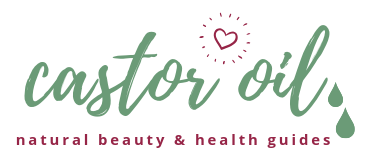Using apple cider vinegar for wounds can be an effective remedy for those who prefer natural healing over OTC medications!
Apple cider vinegar’s goodness is not limited to culinary uses—it also effectively works for other purposes. Let’s find out if apple cider vinegar is effective for wounds.
What Is Apple Cider Vinegar?

Apple cider vinegar (ACV) is made from fermented apple juice, where the natural sugars in apples are first converted into alcohol and then into acetic acid. This acetic acid is what gives ACV its signature tangy taste and strong aroma. The fermentation process also produces beneficial compounds like enzymes and probiotics, which contribute to its health benefits.
Studies suggest that ACV can help in weight management by promoting feelings of fullness and reducing calorie intake. Additionally, ACV is potent in regulating blood sugar levels by improving insulin sensitivity, making it a popular choice for those managing diabetes.
However, due to its high acidity, you must always dilute apple cider vinegar before consuming it to avoid irritation to your throat, teeth, and digestive system.
Does Apple Cider Vinegar For Wounds Work?
If you’re considering using apple cider vinegar (ACV) for treating wounds, it’s good to know that it does have some antibacterial and antifungal properties, thanks to its acetic acid content. This means it can help clean minor cuts or scrapes and prevent infection by killing off some harmful bacteria. Plus, ACV’s natural acidity can help balance the skin’s pH, making it harder for bacteria to survive.
However, there’s more to this. Because ACV is quite acidic, applying it directly to an open wound can cause irritation or a burning sensation. So, it’s important to dilute it with water before applying it to your skin. Remember, ACV is best used for cleaning minor wounds rather than anything deep or serious. For anything beyond a small scrape, or if you’re unsure, it’s always a good idea to consult with a healthcare professional.
Types Of Apple Cider Vinegar For Wounds

1. Distilled Apple Cider Vinegar
Distilled white vinegar, made from fermented grain alcohol, is a safe bet for cleaning wounds. Its sterile nature and antimicrobial properties make it effective in cleansing wounds and preventing infections.
2. Medical-Grade Apple Cider Vinegar
Medical-grade apple cider vinegar, designed specifically for healthcare settings, ensures top-notch quality and safety. Its rigorous sterilization processes offer the same antimicrobial benefits as distilled white vinegar.
Useful Components Of Apple Cider Vinegar For Wounds
1. Acetic Acid
Acetic acid, the primary component of apple cider vinegar, creates an environment hostile to bacteria, helping in faster wound healing by preventing infections and fostering healthy tissue growth.
2. Malic Acid
The malic acid content assists in exfoliation, removing dead skin cells and stimulating the regeneration of new tissue, thereby facilitating wound healing.
3. Enzymes
Enzymes such as pectinase and cellulase found in apple cider vinegar contribute to wound debris removal, promoting healing and reducing infection risk.
4. Polyphenols
Polyphenols, powerful antioxidants in apple cider vinegar, alleviate inflammation at wound sites, expediting healing and minimizing discomfort.
5. Probiotics
Apple cider vinegar may contain probiotics, beneficial bacteria that maintain skin microbial balance, aiding wound healing by inhibiting harmful bacteria growth and supporting tissue repair.
How Do You Use Apple Cider Vinegar For Wounds?

Follow these guidelines carefully on how to properly use apple cider vinegar for wound care to harness its healing potential while minimizing risks:
- Dilute the apple cider vinegar with water in a ratio of 1 part vinegar to 3 parts water.
- Clean the wound gently with mild soap and water before applying the diluted apple cider vinegar.
- Soak a clean cloth or cotton ball in the diluted solution and gently dab it onto the wound.
- Allow the vinegar solution to air dry on the wound, or you can cover it with a sterile bandage if necessary.
- Repeat this process 1-2 times per day, depending on the severity of the wound and your healthcare provider’s recommendations.
- Monitor the wound for any signs of irritation or infection, and discontinue use if any adverse reactions occur.
